I have DataGridView containing 2 cells like this:
For Size, ComboBox is populated based on what the user choose in Material Combo Box. If I select Material ComboBox and then choose the size is not show the error, but when I want to select other Material and it show the error like this:
for showing the size based on what user choose in the material type ComboBox, I use CellValueChanged . Here is the code
Private Sub dgMaterial_CellValueChanged(sender As Object, e As DataGridViewCellEventArgs) Handles dgMaterial.CellValueChanged
Dim dTableSize As New DataTable
Dim lngID as Long
If e.ColumnIndex = 0 AndAlso e.RowIndex >= 0 Then
lngID = dgMaterial.Rows(e.RowIndex).Cells(e.ColumnIndex).Value
Dim AdSize As New SqlDataAdapter("SELECT ID, sizeY from ItemSC WHERE ParentID = " & lngID & "ORDER BY sizeY", con)
Dim str As String
AdSize.Fill(dTableSize)
dgmSize.DataSource = dTableSize
dgmSize.DisplayMember = "sizeY"
dgmSize.ValueMember = "ID"
End If
End Sub
is it the correct way to show the size in the Size ComboBox?
Update:
I use the suggestion from jmcilhinney and still experience the same problem. In the CellValueChanged Event Handler, I remove the line for filling the DataTable and move it to the EditingControlShowing Event.
Private Sub dgMaterial_EditingControlShowing(sender As Object, e As DataGridViewEditingControlShowingEventArgs) Handles dgMaterial.EditingControlShowing
Dim dTableSize As New DataTable
If TypeOf e.Control Is ComboBox Then
Dim AdSize As New SqlDataAdapter("SELECT ID, sizeY from ItemSC WHERE ParentID = " & lngIDMat & "ORDER BY sizeY", con)
AdSize.Fill(dTableSize)
dgmUkuran.DisplayMember = "sizeY"
dgmUkuran.ValueMember = "ID"
dgmUkuran.DataSource = dTableSize
End If
End Sub
is this the right way?

